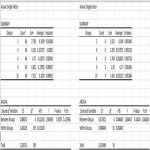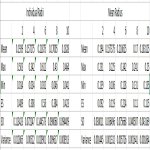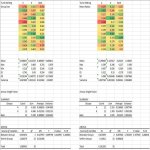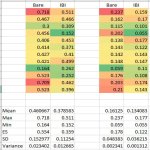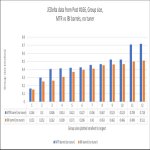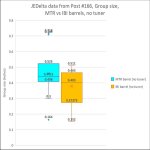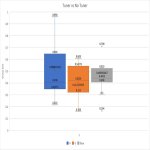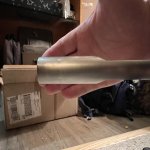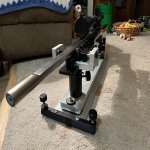Hey JEDelta: I just had a brainwave on how to re-analyze your data from post #155: Now that you are using OnTarget to measure radius from a central point of aim, you don't need to "group" the groups, and you don't need mean radius per group, and can save time and money in your tuner testing. You can use the single radius per round as the sample.
Groups: The traditional 5-shot group is the single sampling unit (1 group = 1 sample) per tuner setting (treatment), and it provides one number: the group size. But it requires 5 rounds. 8 groups requires 40 rounds to produce just 8 samples.
With OnTarget measures for the radius of each shot, you don't need to analyze by group for understanding dispersion patterns affected by a tuner.
Radius: Each round shot generates a radius from the central point of aim. The radius from each shot is the sample for each tuner setting. In your data in post #155, using OnTarget, you generated 40 radii samples per tuner setting, not 8. There is no need to group the radii into 5-shot mean radius stats. You have a sample set of 5 tuner settings x 40 rounds for a total of 200 samples! That is a robust data set that exceeds the magic number of 30 samples per treatment that the textbooks say is needed for a solid sample size.
If you have the time, it would be neat to see the 5 x 40 table of radii from post #155, and the ANOVA for it, and a pair-wise comparisons for the two best looking tuner settings.
Groups: The traditional 5-shot group is the single sampling unit (1 group = 1 sample) per tuner setting (treatment), and it provides one number: the group size. But it requires 5 rounds. 8 groups requires 40 rounds to produce just 8 samples.
With OnTarget measures for the radius of each shot, you don't need to analyze by group for understanding dispersion patterns affected by a tuner.
Radius: Each round shot generates a radius from the central point of aim. The radius from each shot is the sample for each tuner setting. In your data in post #155, using OnTarget, you generated 40 radii samples per tuner setting, not 8. There is no need to group the radii into 5-shot mean radius stats. You have a sample set of 5 tuner settings x 40 rounds for a total of 200 samples! That is a robust data set that exceeds the magic number of 30 samples per treatment that the textbooks say is needed for a solid sample size.
If you have the time, it would be neat to see the 5 x 40 table of radii from post #155, and the ANOVA for it, and a pair-wise comparisons for the two best looking tuner settings.















































